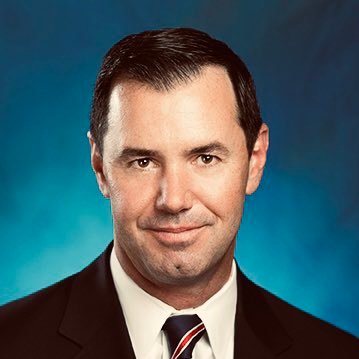This Isn’t Fake News: Mainstream Media Are Very Out of Touch
Massively so, if recent survey research is any guide. But how did they get SO far out of touch?
From media and culture analyst Joe Concha at The Hill, which reports on the doings of Congress, we learn about a new in-depth survey by the non-politically affiliated Pew Research Center:
Per Pew, 65 percent of the nearly 12,000 journalists surveyed say the media do a solid job of “covering the most important stories of the day” and reporting news accurately. But a solid majority of the American public at large has the opposite view, with just 35 percent feeling the same way. That’s a 30-point perception gap.
Joe Concha, “The media bubble is real: Study shows massive disconnect between journalists, public” at The Hill (June 22, 2022)
Some other contrasts:
● “serving as a watchdog over elected leaders” Journalists: 52% yes. Public: fewer than 5 in 10 for yes.
● “manage and correct misinformation consistently” Journalists: 43% yes. Public: 25% yes.
● “connected to their readers and viewers” Journalists: 46% yes Public: 25% yes.
Sounds like a classic troubled relationship where one party isn’t listening.
In a media release, Pew notes a significant change in journalists’ approach to news coverage that may help shed some light:
… there is no consensus that opposing views always warrant equal coverage. What historically may have been considered a standard norm of journalism (and even a requirement for broadcast stations in their election coverage) seems, in today’s political environment, to be facing a reevaluation as heated debate ensues around the issue of “bothsidesism” – whether news outlets should be committed to always giving equal attention to all sides of an issue.
A little over half of journalists surveyed (55%) say that in reporting the news, every side does not always deserve equal coverage, greater than the share who say journalists should always strive to give every side equal coverage (44%).
Jeffrey Gottfried, Amy Mitchell, Mark Jurkowitz and Jacob Liedke, “Journalists Sense Turmoil in Their Industry Amid Continued Passion for Their Work” at Pew Research Center (June 14, 2022)
Without any apparent awareness of irony, journalists also
… express wide support for another long-standing norm of journalism: keeping their own views out of their reporting. Roughly eight-in-ten journalists surveyed (82%) say journalists should do this, although there is far less consensus over whether journalists meet this standard. Just over half (55%) think journalists are largely able to keep their views out of their reporting, while 43% say journalists are often unable to.
Jeffrey Gottfried, Amy Mitchell, Mark Jurkowitz and Jacob Liedke, “Journalists Sense Turmoil in Their Industry Amid Continued Passion for Their Work” at Pew Research Center (June 14, 2022)
If journalists have already decided who does and doesn’t deserve equal time, they do in fact let their views guide their reporting — all the while insisting that they don’t. Whether their handling of stories is right or wrong, there is no question that they are actually picking sides while believing that they don’t. The public is, of course, well aware that journalists are picking sides — and sometimes a side the public doesn’t really support — which is one reason that the public is increasingly tuning journalists’ perspectives out.

Here’s a classic: A veteran of Gannett’s flagship newsroom, USA Today, David Mastio, was recently demoted. What happened?
I know something about Gannett’s evolution since I was USA Today’s deputy editorial page editor until August, when I was demoted after I tweeted, “People who are pregnant are also women.”
That idea was forbidden because a “news reporter” covering diversity, equity and inclusion wrote a story detailing how transgender men can get pregnant. I compounded my sin against this new orthodoxy by calling the idea that men can get pregnant an “opinion.”
If I wanted to keep any job at USA Today, my bosses informed me, I needed to delete these offensive tweets because they were causing pain to the LGBTQ activists and journalists on our staff.
Now, I have been an opinion journalist for 30 years — I thought I was authorized to have opinions.
David Mastio, “USA Today demoted me for a tweet — because its woke newsrooms are out of touch with readers” at New York Post (June 23, 2022)
The LGBTQ Employee Resource Group thought Mastio should be fired but he was only demoted and he then took a position elsewhere.
Surely it is significant that this sort of activism coincides with the continent-wide shortage of baby formula which has seen parents of young children rushing from store to store only to meet with rationing and empty shelves. The shortage shows little sign of easing soon. There is also a tampon shortage now and the cost of basic groceries for feeding a family is expected to rise through the year.
Media covered the formula issue but as one story among many, hardly as the crisis it was, especially for those who needed special formulas. So here’s a question: How much do average readers with children care about the issues that concern the LGBTQ Employee Resource Group compared to the formula shortage and the other issues outlined above?
With respect to Gannett’s current plan to “embrace diversity,” Mastio — who is now executive editor at Straight Arrow News — comments, “But what if our journalism is written by people who look like America but sound like the Harvard English Department? What if we look like our communities but don’t think anything like them or share their values and priorities?”
As it happens, that is a question with clear answer: Gannett is floundering in red ink. True, its news model may be dated. But updating a model is a project for people in touch with a broad public — which doesn’t sound like the USA Today newsroom.
Back at The Hill, Joe Concha argues that one reason for the current out-of-touchness of journalists is that they mainly live in national power centers:
Since 2004, approximately 1,800 newspapers have shut down because of the collapse of print advertising and readers turning to more convenient online consumption. Fewer reporters and editors has resulted in less trust as news gathering becomes more and more confined to two or three cities.
Joe Concha, “The media bubble is real: Study shows massive disconnect between journalists, public” at The Hill (June 22, 2022)
Those cities are, of course, New York, Washington, and Los Angeles. A news model that serves flyover country must prioritize what matters there. Watch for locally based independent multimedia outfits to start replacing Gannett.
Note: The featured photo is by Thomas Charters on Unsplash.
You may also wish to read: Have newspapers simply lost touch with the mainstream public? The depressing stats tell a tale that’s a bit more complex: Readers tolerate out-of-touch media less now because they we need them so much less. Some journalists, says the New York Times’s top editor, see Twitter as the public that matters. That’s why their news medium is doomed.
